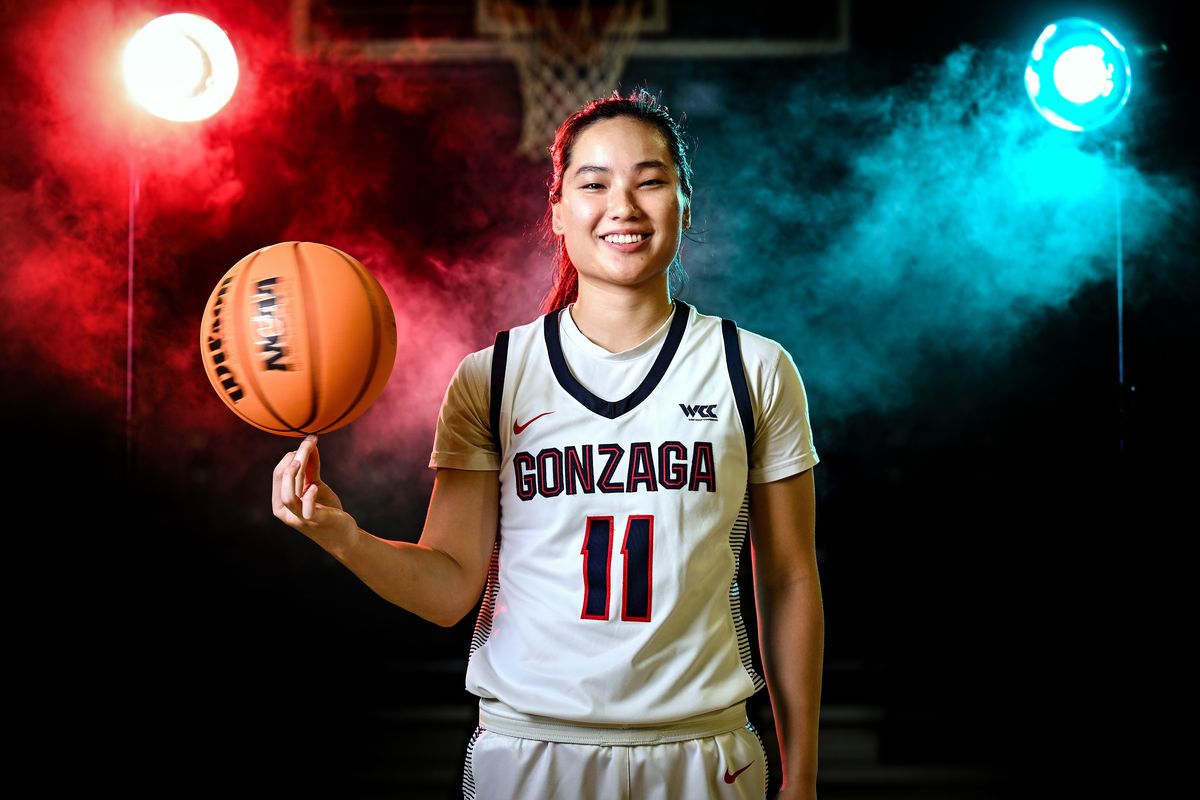College basketball 2022-23: Despite loss of four starters, Gonzaga women in good hands with steady Truong sisters, Yvonne Ejim

In many ways life is back to normal for the Gonzaga women.
The pandemic is finally in the rearview mirror, crowds are expected to fill the Kennel once again and the Zags are favored to win the West Coast Conference regular-season title.
On the other hand, coach Lisa Fortier and her staff must find new roles for several players after losing four starters from last year’s squad.
And for the first time that anyone can remember, they go into a new season with no incoming freshmen.
“It’s the first time I can recall,” said Fortier, who began her GU career as an assistant in 2005.
However, the Zags bring back enough talent from last year’s 27-7 squad to merit the favorite’s role to win the WCC title and presumably get back to the NCAA Tournament.
GU did that the hard way last year, overcoming two regular-season losses to BYU and upsetting the Cougars in the WCC tournament. GU eventually reached the second round of the NCAA Tournament.
“They never stopped believing,” Fortier said.
The challenge is different this year. There’s plenty of experience, but the challenge lies in finding bigger roles for a big group of returnees.
In more ways than one, the Zags will be led by their lone returning starter, senior point guard Kayleigh Truong.
One of the most consistent players in recent program history, Truong has excelled at the point. Last year she averaged a team-high 11.2 points and shot 35% from long range and had an assist-to-turnover ratio of 1.4.
Truong plans to amplify her voice as a leader on the court and hopes to start alongside her twin sister Kaylynne.
Coming off the bench last year, Kaylynne put up almost identical numbers to her sister’s: 10.4 ppg and 35% from beyond the arc.
But that’s the big question: Would it be better for Kaylynne to come off the bench, as she did last year for her sister and shooting guard Cierra Walker?
Walker is gone, replaced by Utah grad transfer Brynna Maxwell. A 38% shooter from long range, the 6-foot Maxwell is a solid bet to start, either at guard or on the wing (should both Truong sisters start.)
Another option on the wing is junior McKayla Williams, who excelled as a defender last year and got off to a great start this year with her long-range shooting at FanFest.
Shooting was an issue last year for Williams, a former four-star recruit out of Los Angeles who was 32% from the field last year and 22% from long range.
“But she makes a lot of correct decisions – when to drive and when to shoot,” Fortier said. “And she’s a good, long defender, and we don’t have as many of those this year.”
Also in the mix at guard is redshirt freshman Calli Stokes, whom Fortier calls “one of or hardest workers” as well as one of the most versatile. “She’s going to have opportunities at shooting guard or wing,” Fortier said.
A bigger uncertainty is the status of guard/wing Bree Salenbien. The first five-star recruit in program history, Salenbien is still recovering from a knee injury suffered in March.
“It’s up to the doctors,” Fortier said of the timetable for Salenbien’s return.
The options in the paint begin with 6-1 junior Yvonne Ejim, whose power and quickness make her one of the premier forwards in the WCC.
Ejim is an All-WCC preseason pick after averaging 10.1 points and 5.6 boards last year.
“Vonnie is one of those special players who has all the aspects of offense, defense and the ability to handle the ball,” Fortier said.
Ejim will need some help, and the best options appear to be Maud Huijbens and redshirt junior Eliza Hollingsworth.
Both are 6-3, but the similarity stops there. Hollingsworth, a redshirt junior, is a good outside shooter but looked uncomfortable at times in the paint. Huijbens, a sophomore, is a strong force inside but struggled at times in passing the ball.
Another freshman, Esther Little, saw limited playing time last year. Also in the mix is junior college transfer Destiny Burton.
Another challenge for the coaches will be managing minutes and rotations. Fortier likes to hold players under 30 minutes on the court, but that may be more difficult with 11 players.
“We will have to see,” Fortier said. “I think that conditioning and foul trouble are going to be interesting – those might be the limitations.”